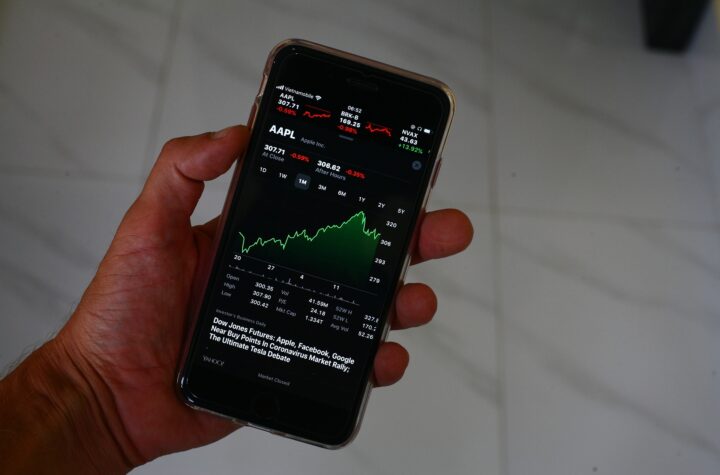So far, 2019 has been an exciting year for Small Cap and Micro Cap Biotech. $XBI, a leading ETF that covers the sector, has rallied by 30%. Merger fever is in the air as Big Pharma continues to consume scrappy startups in fields from oncology to neurology, often at lucrative premiums. Headlines have burst forth describing scientific breakthroughs that will eventually make a fortune for……someone. But how do we know what will be treasure, and what will be trash? How do we know who has real science, and who is selling snake oil?
Here are some tips to protect yourself in this fast paced world…..
In recent days, there has been an avalanche of negative publicity around so called “penny stocks,” biotech stocks, and the world of micro cap investing in general. This negative publicity has been set off by two inter related events. First, the SEC has charged Dr. Phillip Frost and his company, Opko, with running a “pump and dump” stock manipulation scheme related to certain thinly traded biotech securities. (see, Opko is not Fraudco!). Secondly, Bank of America’s Merrill Lynch, one of America’s largest money managers for “regular folks,” has virtually forbidden its advisors from recommending micro caps, or as they define it, “any stock trading below $5 per share and/or with a market cap less than $300 million dollars.” With one tiny memo, Bank of America has just cut off hundreds of legitimate biotech start ups from millions of willing investors! Due to the typical herd mentality of Corporate America, other big banks may well follow suit. So your nephew, the newly minted MBA who just got a job as a financial advisor at Citibank, is now unlikely to offer you an investment in a startup trying to cure cancer. Corporate America is backing away from microcaps. Should you too?
If you are reading this post, you have probably already decided not to give up on biotechs. While risking hard earned capital to cure cancer is certainly a noble pursuit, it’s also been incredibly lucrative for those who dare. After all, XBI, an exchange traded fund that invests in a broad range of small biotech companies, has delivered a blistering 16.96% average annual return over the last 10 years, as opposed to the S&P 500’s annual return of 10.86%. This means that $10,000 invested in 2008 would be worth almost $60,000 today! (Fidelity, Inc, website). In short, risking good capital to cure terrible diseases has been one hell of a great business in America. Don’t let the scaredy cats at Merrill Lynch screw you out of this opportunity!
That being said, every Porsche comes equipped with a seat belt, an air bag, and brakes. For me, the thrill of driving fast exceeds the inherent risk, but there are still a few basic precautions that I take to make sure that I can enjoy driving fast for many years to come. Let’s review the basics to avoiding fraud in the world of microcap, biotech investing.
Why go Public At All?
There is no getting around the fact that smaller public companies can be more vulnerable to fraud than the Apples or Googles of the world (not that fraud doesn’t happen with mega caps….ask the SEC about Elon Musk and Tesla!). Microcaps are more vulnerable to fraud for the following reasons:
1) Smaller pool of shareholders. Millions and millions of people own shares in Amazon. This means lots and lots of constant scrutiny for Amazon’s executive team. Not so much with a small biotech with only $100 million in market capitalization, and just a year or two track record as a public company. It just translates to less people to “watch the store,” and fraudsters can see this as a tempting target.
2) Less shares on the market means lower liquidity. If you look at the “Average Volume” column on the etrade listing for Eli Lilly, a pharma mega cap, you will see that shares for the company change hands an average of 3.9 million times a day. However, if you look at the same column on the listing for Sensus Healthcare, a small producer of dermatological equipment, you will see that the shares trade only 157,000 times per day. Some young biotechs trade much less frequently than that. This phenomena can open up opportunities for Wall Street “Wolves” with strong math skills and weak morals to manipulate the share price.
3) Biotech stocks can be inherently complicated and hard to understand. Do you understand the difference between Crisper and RNA Protein Silencing? Do you understand the difference between Immunocell technology and Stem Cell technology? Well, they all may cure cancer in one way or another. Emphasis on “May.” Small biotechs almost always have brand new, experimental, and not widely understood technology that hopes to achieve something big, bold, and groundbreaking. In order for lasting, long term success to be achieved, the science must come first, and many scientific and governmental norms must be observed along the way. But if these kinds of companies fall into the wrong hands, the hype can over take the reality, and the marketing team can displace the scientists. Then we have the anatomy of a fraud.
Given all of these risks, which manifest themselves more frequently in small public companies than in private companies or more mature public companies, why should biotech startups be allowed to go public at all? There are a few big reasons, and I believe that the rewards greatly outweigh the risks.
1) Scientific Innovation can cost lots and lots of money. The publicly traded company is one of history’s greatest inventions for raising capital and spreading risk. The days of a solitary scientist, toiling late at night alone in his lab to discover a breakthrough, are long gone. Today scientific discovery and development is a torturous road involving many teams of scientists, expensive and time consuming trials, and government approval processes that move slightly slower than a turtle stuck in glue. While today’s business environment has presented viable alternatives for young companies that do not yet want to go public, going public still provides unprecedented access to capital markets. In the world of high flying biotech, access to capital is life itself.
2) Real liquidity can be key to attracting and retaining key personnel. Despite all of the hype around so called “unicorns,” or extremely valuable privately held companies, it’s still fairly tough to get real money out of privately held stakes in companies. If you own 10% of a privately held company, it will certainly be worth……whatever someone will pay for it. If they will pay for it. When they get around to paying for it. That can be a pretty tough sell to academics or execs who need to make their mortgage payment today. If I own 10% of a company listed on Nasdaq, even if its total market capitalization is “just” $100 million, I am a very rich man. Not a theoretically rich man. A rich man today. I can put my shares up for sale today, and within 48 hours I will probably have enough money to pay my mortgage, or three or four mortgages, for a long, long time. That liquidity, that freedom to “cash out,” on my own schedule, is a great way to attract and retain critical team members to a venture that is, by its very nature, quite risky.
3) Despite all the risks and pitfalls, there is still just nothing like the public markets as a way to create massive wealth. Anyone who is a tenured biotech investor has seen situations where a $3 stock, defined by Merrill Lynch as a “penny stock,” suddenly rockets to $9 in value due to a legitimate reported breakthrough in a laboratory somewhere. Back to the example of the biotech exec who owns 10% of a company with a $100 million valuation. If his shares go from $3 to $9 over the span of two weeks due to a legitimate big announcement, his company is suddenly valued at $300 million, and his stake has exploded upwards to a $30,000,000 valuation!!!! If the company were privately held, it would be a theoretical, non liquid value. If its a publicly listed company, then it’s time to clean out the local Porsche dealership and buy that dream yacht. But it’s not just biotech execs that can reap those rewards. If you were smart enough, (or lucky enough) to buy in at $3, which you could easily do because it’s a publicly listed company, then you may well be on your way to the Porsche dealership as well…….
TRUST, BUT VERIFY
So you have considered the pros and cons, and you have decided to ignore the dullards at Merrill Lynch and plow forward with some biotech microcap investments. It all looks great! There are so many promising press releases, so many glowing articles about the next cure for cancer. How to know when it’s real, and how to spot a fraud?
Here are some simple tips that will raise the probability of avoiding “pump and dump” stock schemes and other types of fraud.
1) Who is the board of directors? Who are the lead executives? By law, every legitimate public company should make it very easy to research the backgrounds of the people at the controls. Do your due diligence about the top two or three execs and the board of directors. If we are talking about a legitimate biotech, we should be talking about a group of people composed of more scientists than marketers, and they will likely be associated with reputable, nationally known research universities. Many established scientists are established professors at well known universities, and as part time gigs they will sit on the board of multiple biotech startups. If they feel that a scam is brewing, they will usually not want to be associated with anything that could tarnish their reputation or threaten their already cozy economic situation. Likewise, company execs should have more than just a blurb of a bio on the company website. Do their LinkedIn profiles match what is listed on the company website? Do they even have a LinkedIn profile? Most scammers involved in stock fraud are sophisticated, long time no goodniks. They conceal themselves in the shadows, and don’t care much for the harsh glare of genuine publicity. As they saying goes, “sunshine is the best disinfectant.” Let the sunshine in…….
2) Where are you reading about the company? Who told you about the company’s exciting prospects? Did you learn about the company from your long time friend, who is now a professor of neurology at Johns Hopkins University, or was it some guy from the Bronx named Sal calling you on the phone to give you the exciting news and to offer you a “once in a lifetime” opportunity? Has the company published data in well know, respectable scientific journals, or does the company’s “data” consist of a few articles published in a magazine you found in a health food store? When you read about the company’s prospects, do the authors seem to devote equal time to both the “pros” and the “cons” of the company, or does the author just seem 100% certain that Shady Biotech Inc has just cured cancer? Sad to say, but if reward is described without risk, and it seems too good to be true, then it probably is.
3) Have you physically inspected the facility yourself? Is the company willing to engage with you directly? I live in Florida, not a well known hotbed of scientific exploration. But even I have managed to find some local companies who have earned my investment dollar. Once I read about them, I physically went to the listed address and knocked on the door. Guess what? Someone answered the door, and I could see for myself that they had very real employees, very real facilities, and were in fact attempting real live scientific innovation. If, like millions of Americans, you live near Boston, New York City, Northern Virginia, Pittsburgh, Texas or just about anywhere on the West Coast, you can do the same, probably much easier than I have. Remember, these are not large companies! They may well engage with you; small, legitimate biotechs are often thrilled to find out that someone has noticed the product that they have created with their precious blood, sweat and tears. But scammers hide away, and don’t want you to know who they are, where they are, or exactly what they are doing. If a biotech gives an investor “the welcome mat” that is a good sign. If not, then not.
4) Study Up! Most people reading this post are not scientists or physicians. Nor do we have unlimited time to do research. But you would be amazed how much you can learn about a specific niche of medicine and science. For example, I am passionate about finding a cure for Alzheimer’s so I actually know quite a bit about the movers and shakers in that niche. As Alzheimer’s is such a plague, there are dozens of companies competing just in that little niche! Orthopedics? Not so much. If I chose to invest in a small orthopedics company, I could be easily fooled because I just haven’t devoted much time to studying broken bones. But regarding broken brains, I do know just enough to be dangerous to fraudsters. If you take a similar approach, 90% of stock frauds will become obvious to you within minutes of reading about them. In addition to being a real american hero, perhaps GI Joe was also a great biotech investor. He taught me that “knowing is half the battle.” All we need to know to make money in biotech, we learned in the third grade!
So don’t believe the hype. Bigger is not always better. Sometimes the tiniest diamond, glimmering amongst the coals, calls out to the astute investor. Follow the above tips, and you can pluck those precious biotech jewels for yourself!







Beware of fool’s gold.
I worked as a chemist in biotech startups for years, sadly, every single one of them was just a pile of BS, you simply can’t do any research on these companies, that doesn’t mean the stocks don’t pop. Some of these companies were even acquired by big pharma, probably for PR purposes.
you can learn a lot by looking at linkedin and seeing where the scientists have come from, but still it may not mean anything.
companies can make a lot of money selling products that aren’t any better than what’s already available, the FDA is in bed with pharma these days.
it’s a ridiculous industry, what amazed me the most was how naïve the phd “scientists” are about it all, how so many bought into the lies.
This brings up another problem with biotech, it’s very hard to find a job as a scientist, it’s very easy for them to blackball you. NO ONE is going to speak out or expose a fraud even if they get kicked out.
where else can you buy cheap stocks that go to the moon though??
if I’d known most of commercial scientific enterprises were nothing more than crooked VCs trying to blind people with science i would have become a real estate agent.